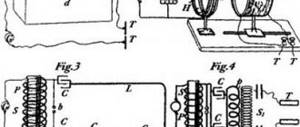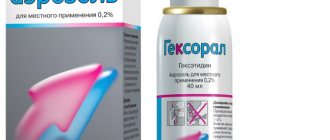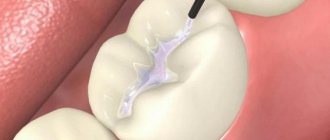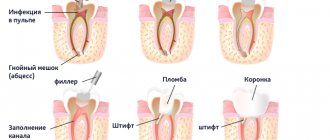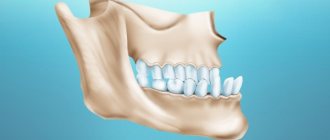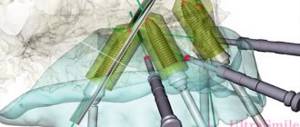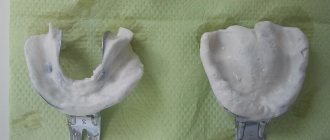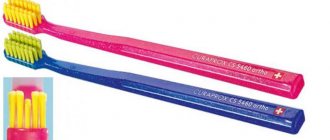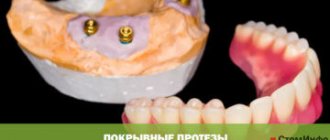Injection anesthesia is the most common method of anesthesia in dentistry.
Many people experience discomfort after dental treatment. Quite often, patients begin to experience pain from the administration of the anesthetic.
The problem is addressed after a day from all dental procedures, since before that the painkillers were still in effect. If your gums hurt after an anesthesia injection and the discomfort only increases within 24 hours, you should immediately contact the clinic.
After treatment and tooth extraction, pain often occurs at the site of injection of the anesthetic. Sometimes pain can be accompanied by swelling and impaired sensitivity of the soft tissues of the oral cavity.
Why does our body need hyaluronic acid?
Hyaluronic acid is synthesized by the human body independently. It is a natural component of the extracellular matrix that makes up all connective tissues. And this, in turn, is a kind of “filler” between the cells and organs of our body: a framework of complex proteins, hyaluronic acid and other elements.
It is in this environment that all important intercellular processes occur: growth, nutrition and migration of cells, transmission of signals and impulses, removal of toxins, etc. Hyaluronic acid (both native and synthetic) plays a huge role in them.
In addition, hyaluronic acid is found in synovial fluid, which fills the joint cavity. In fact, acting as a lubricant. It is also part of the skin, responsible for its renewal, that is, cell regeneration.
Interestingly, a person is born with a large supply of hyaluronic acid in the body. But gradually its volume begins to decline. From the age of 20, acid production slows down; until about 30 years of age, its amount is still sufficient, but after 40 years, a person begins to experience acid deficiency and by the age of 50, its amount is halved. This occurs due to the natural aging of the body, as well as the presence of bad habits, poor environment, frequent stress, and concomitant diseases. And an acute lack of hyaluronic acid leads to a weakening of local immunity, thinning of the skin and gum tissue, and a slowdown in metabolic processes in the body as a whole. That is why it is necessary to replenish its quantity.
“Biogels based on hyaluronic acid are a powerful aid in eliminating the consequences of periodontitis and gingivitis. They quickly relieve inflammation, restore the volume and structure of soft tissues, and return the gums to a healthy appearance. But injections alone will not cure the disease. We use them in the Smile Recovery complex of treatment programs as maintenance therapy, and not just as an independent procedure.”
Tarabanovskaya Marina Igorevna, dentist-therapist, periodontist, work experience more than 9 years make an appointment
Each stage of periodontitis has its own comprehensive approach!
Stage I treatment “Recovery”
restoration of soft tissues, maintenance of periodontal health. 50,000 rub.
Stage II treatment “Persistent remission”
elimination of inflammation and tissue restoration, achieving stable remission. 140,000 rub.
Stage III treatment “Rescue and Preservation”
intensive restoration of soft tissues and bones, preservation of teeth. 220,000 rub.
Features of anesthesia
Today in dentistry, pain relief is very often used by injecting an anesthetic with a syringe. This is convenient for the dentist and makes it possible to reliably turn off sensitivity during any surgical interventions. You can learn how the most common types of pain relief in dentistry are performed by watching the video in this article.
Infiltration and conduction techniques are mainly used. The big advantage is that this allows you to act locally without having a toxic effect on the entire body.
Infiltration anesthesia is carried out directly in the area of the problem area. Conduction anesthesia affects the branch of the nerve responsible for a specific area of innervation. This technique is necessary for more extensive medical interventions.
Infiltration anesthesia on the upper jaw
Many people are concerned about the question: does it hurt to give anesthesia to the gums? Of course, the procedure is not pleasant.
Before carrying out the manipulation, for particularly sensitive patients, dentists irrigate the injection site with anesthetics in an aerosol. However, recently very thin needles have been used for carpule syringes, which minimally injure soft tissues.
What effect can you achieve?
Preparations based on hyaluronic acid primarily demonstrate a pronounced anti-inflammatory effect: in particular, inflammation decreases by 2.5 times within 1 week after the start of therapy1 - the gum bleeding index decreases from 57% to 23% after 7 days, and after a month - up to 19%.
- reduction of inflammation: hyaluronic acid effectively fights certain types of bacteria, saturates cells with nutrients, normalizes local immunity and the general condition of the gums. All this allows the drugs to have an anti-inflammatory effect,
- faster rehabilitation after surgery, in particular gum curettage: synthetic acid activates special cells - fibroblasts, which are responsible for the production of collagen, elastin and their own hyaluronic acid. All this restores the normal structure of tissues, promotes healing of injured areas,
- tissue nutrition: hyaluronic acid is a kind of “transport”, it helps deliver oxygen and nutrients, which normalizes metabolic processes between all cells of periodontal tissues,
- restoration of water balance: one of the most famous properties of “hyaluronic acid” is the ability to bind and retain water, forming a soft elastic gel. In the gums after injections, water-salt metabolism is normalized, elasticity and resistance increase,
- reduction of swelling and pain: due to the fact that replenishing the amount of acid normalizes metabolic processes and affects the permeability of vascular walls, excess fluid pressure is reduced, and swelling resolves faster,
- correction of gum level: viscous gels with hyaluronic acid are injected into the “sagging” interdental papillae and gums in the recession zone. The gel is distributed in the tissues, replenishes lost volume and corrects the gingival contour. With 1-3 courses of injections, you can get rid of blackheads (holes) as a result of loss of volume of the gingival papillae.
After complex gum treatment – results after the second session
Beautiful gum contour without inflammation! Don't delay treatment - act now! Sign up for a free consultation and computer diagnostics
SIGN UP
How to get rid of pain after anesthesia
If the pain does not subside within a week after the manipulation, but, on the contrary, intensifies, becoming pulsating, you should consult a doctor. You should not self-medicate, since ordinary inflammation, which causes pain, can be complicated by the addition of an infection, and treatment will become more protracted and difficult.
At first, when the pain is still severe, strong non-steroidal anti-inflammatory drugs help:
- Xefocam;
- Nurofen;
- Nimesulide;
- Ketanov.
It is important to take into account their harmful effects on the gastrointestinal tract and avoid overdoses.
What drugs are used for treatment
The Smile-at-Once Clinic uses Revident and Revident+ gels. These drugs are registered in our country2, approved by the Dental Association of Russia (StAR) and are widely used in dental practice.
Revident contains low molecular weight, native (that is, not chemically modified, natural) hyaluronic acid of non-animal origin, which is quickly “absorbed” by tissues and has a pronounced therapeutic effect. The acid is stabilized, that is, more stable and gives a long-lasting effect.
Revident+ is a more viscous gel due to high molecular weight cross-linked acid. The drug remains in the tissues for a long time, is released gradually, replenishes the lost volume and does not “drain” from the injection site. It is used for more advanced stages of periodontitis, severe gum recession, when massive restoration of destroyed tissue is required.
Result after 6 months. after complex Smile Recovery treatment, including the use of preparations with hyaluronic acid
The jaw hurts and clicks after prosthetics or dental treatment
Dysfunction of the temporomandibular joint. The lower jaw is connected to the skull by two temporomandibular joints. Impairment of the function of these joints is possible after the installation of a denture, crown, bridge, any treatment or tooth extraction if this leads to malocclusion and/or damage to the temporomandibular joint. This is a typical complication after dental prosthetics. Read more about treating TMJ dysfunction here
Temporomandibular joint dysfunction
The green arrow indicates a healthy joint. The red arrow points to the joint that remains in the “open” position when the mouth is closed. This leads to wear and tear of the articular cartilage, pain and clicking when opening and closing the mouth. One of the reasons is the incorrect position of the upper right “eight” (tooth 1_8 lies horizontally).
How can we help you:
- Anti-inflammatory treatment will help relieve pain. If necessary, we inject anti-inflammatory medication directly into the lower jaw joint. This brings relief within a few minutes.
- Injection of botulinum toxin preparations (for example, Botox or Dysport) into spasmodic muscles. This is relevant in the case of an excessive increase in the tone of the masticatory muscles, if it is the muscles that are the “culprit” of dysfunction of the temporomandibular joint.
- Treatment by an osteopath. An osteopath works with the joints and muscles of the jaw using gentle manual techniques. This way you can solve a lot of problems that cannot be solved in classical dentistry. More about osteopathy
- Introduction of chondroprotectors (medicines for nutrition and restoration of cartilage) into the temporomandibular joint. Read more about cartilage restoration
How is the procedure performed?
The drugs are released immediately ready for use: the gel is supplied in a disposable glass syringe, the needles are packaged with it in one sterile transparent blister.
At the first stage, mandatory diagnostics are carried out to clarify the cause of the development of the inflammatory process. Next is a comprehensive five-step oral hygiene - a mandatory stage, since without removing plaque and stone, any effect from the treatment will be absent. If there are a lot of deposits and they are located deep under the gums, then open or closed gum curettage is required.
The procedure itself is carried out in the form of injections:
- the injection site is numbed,
- the packaging is opened in front of the patient,
- the screw protective cap is removed from the syringe,
- a sterile needle from the same package is placed on the syringe,
- the gel is precisely injected under the mucous membrane of the gums into places where there are no large nerve endings and blood vessels. As a rule, along the entire length of the dentition.
Injections can be carried out either one-time or in a course of several procedures - depending on the severity of the inflammation and its consequences. As a rule, for a mild form of periodontitis, one injection is enough - the drugs have a cumulative effect.
Why are gum injections used in dentistry?
Any surgical intervention (amputation of teeth, removal of nerve endings in the root of a tooth, placement of a filling) causes an unpleasant painful sensation of varying degrees. Due to fear of pain, patients often postpone visiting the dentist, which leads to deterioration of the condition of their teeth. Local injections are made to numb the gums.
Another reason for injections into the gums is the administration of anti-inflammatory drugs and antibiotics in the treatment of gingivitis and periodontal disease. The question arises about intramuscular injections, since such manipulations also reduce inflammation and pain sensitivity.
Dentists administer local anesthesia for greater effectiveness and speed of reaction. If the anesthetic is administered intramuscularly, its effect will occur over a longer period of time.
Contraindications
Despite the effectiveness of an anesthetic injection into the gums, there are many absolute and relative contraindications.
Absolute contraindications to local anesthesia and anti-inflammatory injections on the gums:
- children under 3 years old;
- pregnancy and breastfeeding;
- increased sensitivity to drugs;
- patients with malignant arterial hypertension;
- a history of diabetes mellitus;
- diseases of the bronchopulmonary system.
Relative contraindications to manipulation will be:
- children under 7 years old;
- presence of problems with the liver and kidneys;
- oncological diseases (refers to antibiotic therapy);
- reduced immunity;
- gastrointestinal disease.
Do you need preparation for therapy?
In general, preparation consists only of removing dental plaque, since otherwise the source of inflammation will not be eliminated and the desired effect will not be achieved. It is also advisable not to carry out the procedure during periods of acute viral infections, including local ones (in the oral cavity), such as candidiasis, since the effect will be lower. It is also important to simultaneously treat general diseases of the body that cause metabolic disorders, in particular diabetes.
Result 10 days after starting treatment
How to relieve pain?
Prescription of medications to help cope with pain is done only by the attending physician. If the cheek or gums are swollen, an abscess has appeared, there is itching and burning, soft tissues have changed color, in such situations self-medication is strictly prohibited. To stop the inflammatory process in the jaw, the dentist may prescribe antibiotics, including:
To relieve pain symptoms for a long time, potent drugs are prescribed:
If the patient has a lump with pus inside at the site of anesthesia, the dentist will need to open it and apply an antiseptic. Subsequently, rinsing with Chlorhexidine or Miramistin is prescribed. Following all the dentist’s recommendations and oral hygiene will minimize the likelihood of other unwanted reactions.
Video: does anesthesia hurt?
Recommendations for the patient after hyaluronic acid injections
During injection, the mucous membrane is slightly, but still injured by the needle. At the injection site, slight swelling and soreness may occur, which disappear within a few hours, or at most a couple of days.
At this time, you need to carefully brush your teeth, preferably with a soft brush. It is not recommended to overheat or overcool the gums with food or drinks of inappropriate temperature, so as not to prolong the discomfort. It is also advisable not to go to the bathhouse or sauna for 7-10 days, avoid excessive physical activity and quit smoking and alcohol.
Does it hurt to give an injection in the gum?
The painful process of needle penetration into the gum is insignificant, since dentists use small-diameter needles, damaging a small area of tissue of the oral mucosa.
Whether it hurts to give an injection in the gum is a question of the patient’s psychological state and his mood for treatment. Before performing the puncture, the doctor reassures the patient, reminding him that the injection is painless, since this manipulation is short-lived.
If the patient refuses anesthesia, the dentist warns about the increased likelihood of unbearable pain during surgical interventions, and any movements in the dental chair can lead to errors in treatment or complete ineffectiveness of the treatment measures taken.
People who have a high threshold for pain sensitivity are recommended to use anesthetic gels and sedatives (glycine, valerian, etc.) before going to the dental clinic (or before an injection while in line to see a doctor).
Does the method have any disadvantages?
Synthesized hyaluronic acid is biocompatible and its composition is almost identical to that produced by our own body. However, this is not a 100% perfect analogue. Even with the highest degree of purification, protein impurities are not completely removed, and allergic reactions to them are possible. Although they happen extremely rarely.
Another point that is sometimes regarded as a disadvantage is that hyaluronic acid injections are ineffective as the only method of treating periodontitis. That is, if you no longer carry out any procedures against the disease, then the use of these drugs will be temporary and ineffective. Just like in cosmetology, the greatest effect is achieved with an integrated approach.
Preventing complications
To prevent unwanted consequences from occurring in the place where the injection was given, you should follow simple recommendations.
- The first meal after manipulation in the mouth is carried out only after 3 hours.
- Do not drink alcoholic beverages, spicy, very hot and salty foods.
- Apply cold compresses to the cheek for 15 minutes.
- It is undesirable to take hot baths and stay in the sun.
- Over the course of a week, cleaning the oral cavity should be done carefully and carefully so as not to damage the wound at the site of anesthesia.
Are there any alternatives to hyaluronic acid?
Hyaluronic acid injections in the treatment of periodontitis and elimination of the consequences of gingivitis are aimed at improving the health of periodontal tissue and stimulating the natural restoration of periodontal tissue. The same goal applies to plasma lifting, laser therapy to accelerate cell regeneration, and bioactive drugs with growth factors. However, each method has its own characteristics, so they work best together.
1 Orekhova L.Yu. The use of hyaluronic acid in the complex treatment of periodontal diseases, 2021.
2 Registration certificate No. RZN 2016/3617 dated May 11, 2016
How to perform the manipulation
Anesthesia is administered depending on the area of the surgical intervention on the gums. For minor manipulations, the dentist uses a 2% lidocaine spray, sprinkling it on the injection site or applying an analgesic strip (Dentinox, Kalgel), waiting for the first manifestations of the analgesic.
If there are no undesirable reactions (allergic, inflammatory), the doctor proceeds to pierce the already numb gums. The injection site should be as close as possible to the diseased tooth to minimize damage to nearby healthy tissue (the development of gingivitis or periodontitis in the future).
Having opened the ampoules with the contents (analgesic), the medical specialist draws several syringes and injects the medicine into the gums layer by layer, starting from the outer layers.
Types of local anesthesia:
- Infiltration anesthesia – used in the treatment of caries, during the removal of dental nerves.
- Conduction anesthesia is when a nerve bundle is blocked during the treatment of several teeth located close to each other.
- Intraligamentous anesthesia - injection of the drug into the peribuccal fold of the mucous membrane (in the treatment of painters and pre-painters).
- Injection of the drug into the bone of the upper or lower jaw. Performed when implants are implanted or molars are removed, in particular wisdom teeth.
- Involvement of the nerve trunk - anesthesia for large-scale dental procedures. It is carried out with the support of an anesthesiologist in a hospital setting.
Local
Since pediatric dentists use local anesthesia most often, we will dwell on it in more detail. This method gives a good analgesic effect, but does not make the treated area completely insensitive. Has a small number of contraindications.
Effective local anesthesia options:
- Applique. The weakest in terms of the severity of the resulting analgesic effect. An anesthetic gel is applied to the gums (most often it includes lidocaine). The active compounds of the drug quickly penetrate the tissues and dull their sensitivity. The application helps to numb the injection site. It is also sufficient if you have to remove a very loose baby tooth.
- Injection. The most popular medications in the field of pediatric dentistry are those containing articaine. They are injected into the gums using a syringe. This remedy is much stronger than novocaine, but has fewer side effects. It can be used from the age of four. Doctors use conduction and infiltration injection anesthesia - the choice of technique depends on the characteristics of the disease. In the first case, the injection is made in the branch of the trigeminal nerve, in the second - in the border of the transitional fold and the alveolar process. Conduction anesthesia can only be performed on patients over six years of age.


